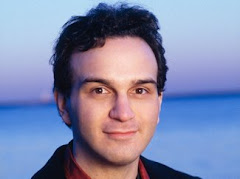Universally known and loved since its world premiere in 1844, everyone has their favourite recording of the Mendelssohn Violin Concerto Op 64 (with mine being Alfredo Campoli's 1958 superlative version with Sir Adrian Boult and the London Philharmonic) and their perfect idea of what this piece should sound like, making musical life very tricky for the 20-year old debutant soloist Grace Clifford with the Malaysian Philharmonic Orchestra under Mark Wigglesworth.
In 2015, we heard Janine Jansen's superb interpretation of the concerto at the DFP Hall. Armed with a good 1859 Jean-Baptiste Vuillaume violin, Clifford with the strong support from Wigglesworth and the MPO gave us a more modest account of the evergreen concerto.
Clifford and Wigglesworth adopted a middling tempo for the opening of the first movement (Allegro, molto appassionato), showcasing her wonderfully smooth legato bowing, fine intonation, beautifully modulated vibrato and sweet tone. However, when there was musical opportunity to colour her playing into variegated moods of agitation in the transitioning triplet passages and relaxation in the lyrical second subject, there was a reluctance to move from a generalized expression into a wider palette of colours that is possible and inherent in Mendelssohn's evocative and passionate score. In short, the element of Sturm und Drang was missing, as Clifford played safe and without edge.
Clifford's playing in the cadenza which Mendelssohn innovatively placed before the recapitulation of the first movement, was self-effacing and not individual in nature. Her technique remained secure in the treacherous ascending broken octave scales at the end before a less convincing acceleration (Piu presto, sempre piu presto, presto) towards the end brought her placid interpretation of the movement to a close.
In the tender second movement Andante, Clifford adopted a lovely flowing speed where the lyrical phrases flowed smoothly into one another, making it a beautiful "Lied ohne Worte" for violin and orchestra. However, Clifford downplayed the turbulent central double-stopped development section, which lacked a restless and agitated feeling.
There was some exhilaration in the brilliant finale taken at a fair tempo and endowed with spirit and sensitivity, without reaching the elfin-like character that permeates Mendelssohn's joyful last movement. Wigglesworth kept good control over its delicate balance and the MPO provided unobtrusive and skilful support. Clifford made an unwarranted accelerando towards the end, perhaps trying to stir up frenetic excitement too late in this wonderful concerto. Clifford gave the audience an encore, the Andante from Bach’s Solo Sonata in A minor No 2 BWV1003.
After a brief interval, Wigglesworth gave us a satisfying interpretation of Mahler's Symphony No 1. The dewy opening bars took some time to settle amidst some questionable ensemble in the massed violin harmonics and poorly tuned horn and trumpet calls. As spring awoke, off-stage trumpets were ear catching and a superb flute contribution by Andrew Rehrig evoked birds chirping. After the mysterious calm of spring awakening, the final climax of the movement exploded with considerable force, enforced by festive horns, brilliant trumpets and triangle.
For the second movement Ländler (Kraftig bewegt), Wigglesworth brought out the music’s swagger and rusticity from cellos and double basses at a tremendous lick. Opening earthiness was nicely contrasted with innocence in the gentle Trio section, with well-marked dynamics, halting rubati and cushioned portamenti from the upper MPO strings.
Wolfgang Steike’s double bass solo, though played with great beauty of tone, was too detached in its Frère Jacques tune in the third movement. Wigglesworth coaxed refined beauty from the strings and flute in the hushed major key interlude alternating with vivid playing to illuminate Mahler’s sardonic and klezmer passages.
The finale’s opening screamed out wildly. It was tortured stuff, supported by powerful brass and percussion. The slower passages were given a rich legato and great sense of freedom in the string phrasing. After the well-played fugato string passages led by the violas, the coda once again erupted in tremendous volume and an uplifting tempo. The horn section and one trombone player leapt to their feet as instructed. Wigglesworth conducted with enormous energy to make for a most thrilling climax to this triumphant symphony with the MPO, almost equalling Rafael Frühbeck de Burgos' wonderful interpretation in 2010.
Subscribe to:
Post Comments (Atom)

















































No comments:
Post a Comment